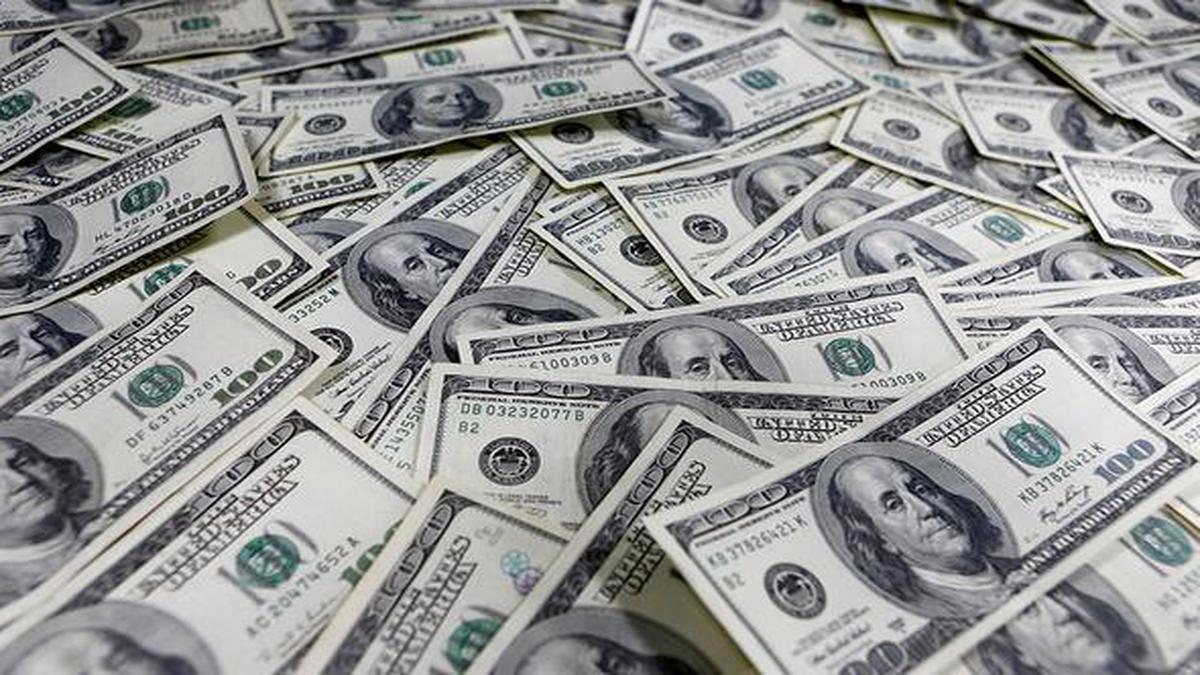India recorded a current account surplus of $5.7 billion or 0.6% of GDP in the March quarter, the Reserve Bank of India said on June 24.
In the year-ago period, the current account deficit stood at $1.3 billion or 0.2% of GDP, and the same was $8.7 billion or 1% of GDP in the preceding quarter ending December 2023.
For FY24, the current account deficit narrowed to $23.2 billion or 0.7% of GDP against $67 billion or 2% of GDP in FY23, the RBI said in a release on the Developments in India’s Balance of Payments.
In January-March 2024, the merchandise trade deficit stood at $50.9 billion, lower than the $52.6 billion a year ago.
Net services receipts at USD 42.7 billion were higher than the $39.1 billion on the back of a 4.1% growth in the segment, the central bank said, adding that this helped in swinging the current account into the surplus territory.
Net outgo on the primary income account, mainly reflecting payments of investment income, increased to $14.8 billion from $12.6 billion a year ago, the data released by the RBI said.
Private transfer receipts, which mainly represent remittances by Indians employed overseas, grew 11.9 per cent to USD 32 billion in the March quarter.
The non-resident deposits also surged to $5.4 billion in January-March compared to $3.6 billion in the year-ago period.
Net foreign direct investment flows were $2 billion in Q4 FY24 against $6.4 billion a year ago.
Foreign portfolio investment recorded a net inflow of $11.4 billion during the quarter compared to a net outflow of $1.7 billion a year ago.
Net inflows under external commercial borrowings to India were $2.6 billion against $1.7 billion.
In FY24, the portfolio investment recorded a net inflow of $44.1 billion against an outflow of $5.2 billion a year ago, while net FDI plummeted to $9.8 billion from $28 billion in FY23, the RBI said.
Aditi Nayar, Chief Economist, Head of Research and Outreach at ICRA, said “India’s current account turned to a welcome surplus in Q4 FY2024 after a gap of ten quarters, with the size of the same, at $5.7 billion, exceeding ICRA’s more modest expectations. The turnaround to a surplus in Q4 FY2024 from a deficit in the year-ago period, was primarily driven by a narrowing in the merchandise trade deficit print to a ten-quarter low of $50.9 billion in Q4 FY2024 from $69.9 billion in Q3 FY2024.
Aided by a narrower merchandise trade deficit and a robust expansion in the services trade surplus, India’s current account deficit (CAD) more-than-halved to a seven-year low of $23.2 billion in FY2024 from $67 billion in FY2023. As a proportion of GDP, it eased to a mild 0.7% from 2.0% in FY2023.
ICRA expects the CAD to rise slightly in FY2025, while remaining eminently manageable at ~1.0-1.2% of GDP, owing to a widening in the merchandise trade deficit in this fiscal, on the back of domestic demand and higher commodity prices. In particular, we have assumed an average price of the Indian basket of crude oil of $85/barrel. A CAD of 1.0-1.2% of GDP in FY2025 would be comfortably financed, particularly given the expectations of large FPI-debt inflows on account of the bond index inclusion starting end-June 2024.”
Madan Sabnavis, Bank of Baroda chief economist said “India’s current account balance recorded a surplus of US$ 5.7 billion (0.6% of GDP) in Q4:FY24 as against a deficit of US$ 8.7 billion (1.0% of GDP) in Q3:FY24 and US$ 1.3 billion (0.2 per cent of GDP) a year ago [i.e., Q4:FY23].
For the full year, the deficit moderated to US$ 23.2 billion (0.7% of GDP) during FY24 from US$ 67.0 billion (2.0% of GDP) during the previous year on the back of a lower merchandise trade deficit which was at $ 242 bn against $ 265 bn last year.
Net invisibles receipt was higher during 2023-24 than a year ago, primarily on account of services and transfers. Software receipts were up from $ 146 bn to $ 160 bn in gross terms. Gross Transfers too were up from $ 112 bn to $ 119 bn. This helped to improve the CAD.
Portfolio investment recorded a net inflow of US$ 44.1 billion as against an outflow of US$ 5.2 billion a year ago. In the run-up to inclusion of Indian bonds in JP Morgan bond index there were long positions taken by investors in the market thus pushing up debt inflows.
Net FDI inflow was US$ 9.8 billion during 2023-24 as compared with US$ 28.0 billion in 2022-23. This slowdown can be attributed to lower flow of funds from developed countries to emerging markets.
In 2023-24, there was an accretion of US$ 63.7 billion to the foreign exchange reserves.
For FY25, going by the early trends, the CAD should be manageable at 1-1.5% of GDP and the steady capital inflows should ensure that the balance of payments which reflect the fundamentals remain comfortable. This will also keep rupee range bound at Rs 83-84/$ with external factors like strength of the dollar guiding the currency.”
(With inputs from The Hindu Bureau)


